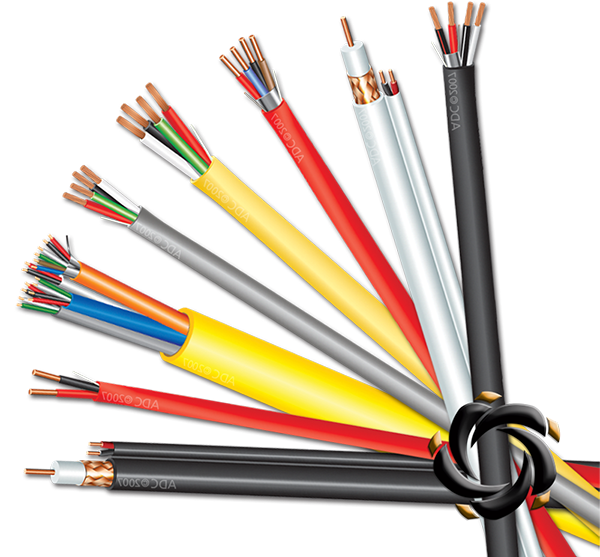Insulation and Signal Integrity
The dielectric material in RG6 Coaxial Cable acts as a critical insulating layer that separates the core conductor (usually copper or copper-clad steel) from the outer shield. By doing so, it prevents any electrical interference between the core and the shield, which could otherwise degrade the signal. This layer of insulation ensures that the signal transmitted through the core conductor remains free from external disturbances such as electromagnetic interference (EMI) or radio frequency interference (RFI), both of which can cause signal loss, noise, and poor performance. The dielectric material creates a stable environment for signal transmission, allowing it to flow smoothly without external disruptions. Its role is vital in maintaining signal integrity throughout the entire length of the cable, ensuring the highest quality of digital and analog transmissions, such as for TV broadcasts, internet signals, or satellite communications.
Minimizing Signal Loss (Attenuation)
One of the most critical functions of the dielectric material in RG6 Coaxial Cable is its impact on attenuation, which refers to the reduction in signal strength as it travels along the cable. The dielectric material directly affects the attenuation rate by controlling how much the signal is slowed down or weakened. The dielectric constant of the material determines how well it insulates the inner conductor, and this affects how much energy is retained by the signal. A lower dielectric constant is ideal, as it results in less signal loss over longer distances. For instance, foam dielectrics have a lower density, which leads to less attenuation and better overall signal quality, especially when used for high-frequency signals like those in HDTV broadcasts or broadband internet systems. The material’s properties help reduce signal degradation, allowing for clearer transmission over longer cable runs, which is essential in residential, commercial, and industrial applications.
Preventing Short Circuits and Cross-Talk
The dielectric material also plays a critical role in preventing short circuits and cross-talk between the inner conductor and the outer shield. By acting as an effective insulator, it prevents the signal from being shorted to the shield or from coming into contact with any external elements that could disrupt the transmission. Furthermore, the dielectric helps to reduce cross-talk, which refers to unwanted interference between different channels or lines within the cable. Cross-talk can result in signal corruption, causing a noticeable decrease in performance, especially in systems that require high fidelity, such as audio-video equipment or digital networks. With its insulating properties, the dielectric ensures that the signal remains pure, eliminating the risk of unwanted signal mixing or degradation, which contributes to a clearer and more reliable signal.
Reducing Capacitance and Maintaining Signal Speed
Capacitance refers to the ability of the dielectric material to store electrical energy. In coaxial cables, excessive capacitance can slow down the signal transmission speed and result in poor performance, especially at high frequencies. The dielectric material in RG6 Coaxial Cable is engineered to have optimal capacitance levels, which ensures that the signal can travel quickly without unnecessary delays. The lower capacitance reduces signal delay, allowing for higher-speed transmission over long distances. This is particularly critical for high-frequency applications such as cable TV, internet data transmission, and satellite communications, where fast and efficient signal transfer is crucial. By controlling capacitance, the dielectric material helps maintain signal velocity, ensuring that data or video content is transmitted with minimal latency and maximum fidelity.
Thermal Stability
Dielectric materials used in RG6 Coaxial Cable are designed to operate effectively across a wide range of temperatures. Thermal stability is an important factor because environmental conditions can fluctuate, especially in outdoor installations or industrial applications where temperatures can vary significantly. The dielectric’s ability to resist heat buildup helps prevent signal distortion, ensuring that the cable operates consistently even in hot or cold environments. For example, the dielectric material ensures that the cable can function in both freezing temperatures and high-heat conditions without suffering from signal degradation or loss of performance. This thermal resistance is especially important for long-term reliability in cables that are exposed to the elements, such as in outdoor coaxial cable installations or underground systems.
















